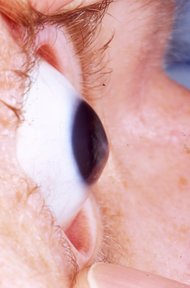PEOPLE & PROMOTIONS
* Industry veteran Jay Little dies. Jay LiHIe, Briot-Weco's National Lab Sales Manager for the United States and Canada, died last month after a sudden illness. Little spent 40 years in optical equipment sales, starting with Coburn Optical Industries and later working with DAC Vision and Optical Dynamics Corp. "Jay's strong passion for putting his customers first was widely recognized," said Bret Davis, president of Briot-WecoUSA.
COMPANY NEWS
* AcuVue Oasys to roll out on schedule. A Florida court last month denied CIBA Vision's motion for a temporary restraining order to halt the launch of AcuVue Oasys Brand Contact Lenses, by Vistakon.
* AMD treatment wins award. Eyetech Pharmaceutical' Macugen (pegaptanib sodium injection) was named Innovative Pharmaceutical Product of the Year at the 2005 Pharmaceutical Achievement Awards. Macugen is the first and only PDA-approved treatment for all types of neovascular agerelated macular degeneration.
* Partnering on patient education. Eyemaginations and M&S Technologies announced an exclusive partnership to make Eye-maginations' patient education and instructional software available for use on M&S's Smart System 2020 Visual Acuity System. The integration of software systerns will allow users to fully control, select and display the patient education software in the exam room by using M&S's remote control.
* Web site gets renovation. Eyedesign.com's updated Web site features a photo gallery of office interiors, optical furniture collections, planning and interior design information and brochures request.
FOUNDATION NEWS
* Addressing keratoconus needs. Addition Technology announced the formation of The Foundation for Keratoconus Care, a non-profit foundation to help keratoconus sufferers. Addition Is the maker of lntacs prescription inserts for the treatment of myopia and keratoconus. The foundation will provide financial support to patients who do not have the means to undergo an lntacs procedure to treat the disease.
* Network with OWA. The Optical Women's Association (OWA) will host a networking social on Friday, Sept. 16 during the International Vision Expo in Las Vegas. The event will be held in The Venetian hotel's Bellini Ballroom from 6:30 to 7:30 p.m.
Copyright Boucher Communications, Inc. Sep 2005
Provided by ProQuest Information and Learning Company. All rights Reserved



